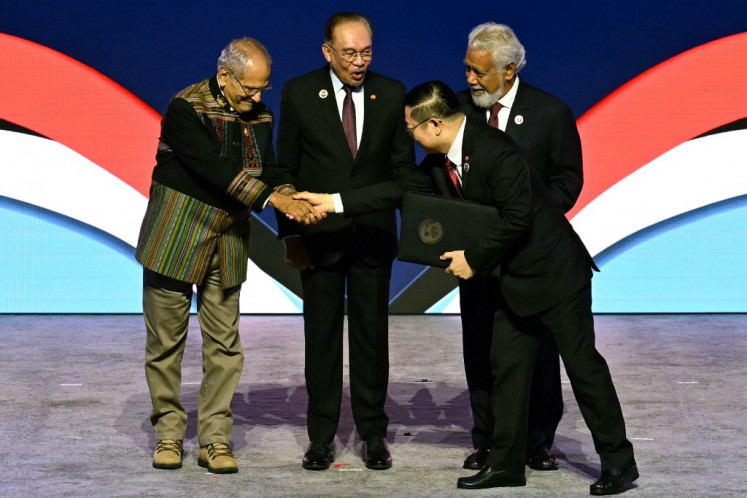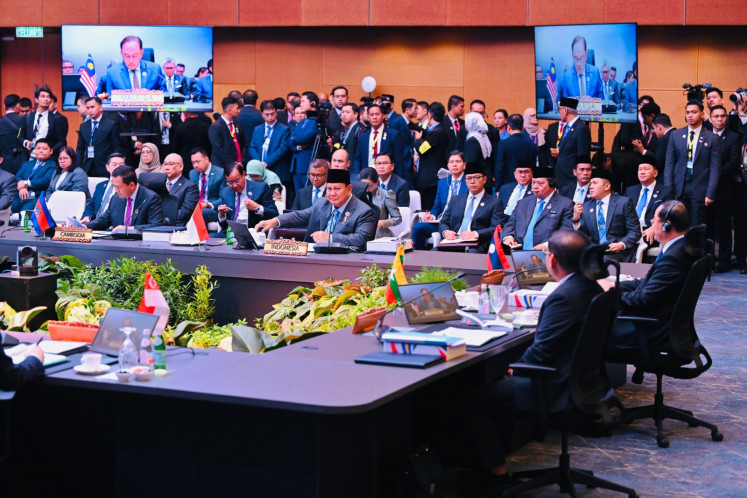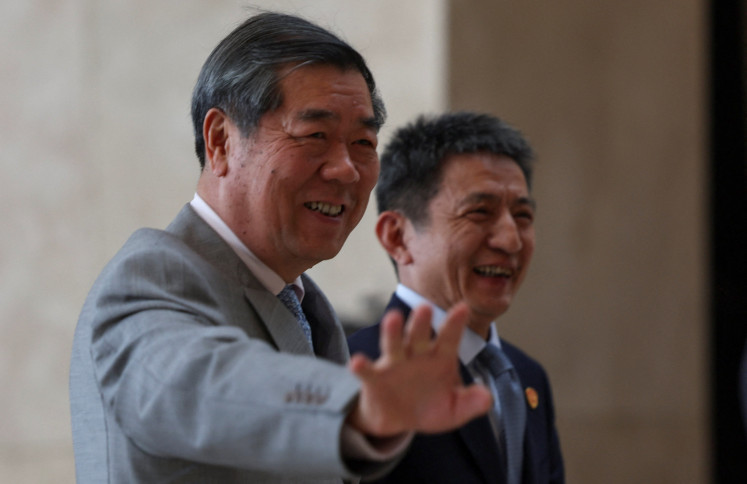Popular Reads
Top Results
Can't find what you're looking for?
View all search resultsPopular Reads
Top Results
Can't find what you're looking for?
View all search resultsInsight: After regaining unity, it is time to move forward
The failure of ASEAN to issue a joint communiqué at the 45th ASEAN Ministerial Meeting (AMM) in Phnom Penh, the first such failure in the group’s history, might have served as a reminder about the challenge facing ASEAN in maintaining and consolidating its unity
Change text size
Gift Premium Articles
to Anyone
T
he failure of ASEAN to issue a joint communiqué at the 45th ASEAN Ministerial Meeting (AMM) in Phnom Penh, the first such failure in the group’s history, might have served as a reminder about the challenge facing ASEAN in maintaining and consolidating its unity.
The failure, resulting from a disagreement on the question of the South China Sea, naturally raised questions about the future of ASEAN’s diplomatic centrality and ability to manage the most the crucial issue in its own backyard.
Within a week, however, that diplomatic debacle — or glitch, depending on how one looks at it — was somehow rectified. Indonesia, as a founding member of ASEAN and also the only member state
that declares ASEAN as the cornerstone of its foreign policy, felt obliged to restore ASEAN’s unity and cohesiveness.
Foreign Minister Marty Natalegawa immediately embarked on what he called “a 36-hour effort, shuttle diplomacy, visits and working the phones” in order to forge a common ASEAN position on the South China Sea.
That diplomatic effort paid off, with all ASEAN members giving their approval and support to Marty’s six principles under the “ASEAN Common Position on the South China Sea”.
Although the principles essentially reiterate what has been ASEAN’s long-standing position on the issue, the agreement does bring ASEAN back onto the path of consensus.
While the effects of the diplomatic hiccup at the 45th AMM might still be felt in the months ahead, ASEAN now has a strong reason to move forward.
It should demonstrate that ASEAN’s Six Principles on the South China Sea are not just another diplomatic façade or smoke-screen to cover ASEAN’s earlier failure.
ASEAN should and can capitalize on the most important objective of Marty’s charm diplomacy, namely, the need to manage the potential conflict in the South China Sea.
Indeed, one of the six principles calls on ASEAN to “conclude early a regional code of conduct [CoC] on the South China Sea”. Two developments are important in this regard.
First, ASEAN has agreed on key elements of the CoC that will serve as the basis for further discussion and negotiation with China.
Second, China itself, following Marty’s initiative, has reiterated that Beijing “is open to consultation with ASEAN on the conclusion of a code of conduct in the South China Sea”. (The Jakarta Post, July 23).
In order to move forward, ASEAN and China need to start the process sooner rather than later. Apart from several tensions over the last few months, there are now signs that the military dimension of the problem, if not handled properly, would complicate the seascape in the region.
In response to other claimants’ moves, for example, China has announced that it would station a military garrison in the Paracel Islands.
Therefore, an early start in the discussion on the CoC between ASEAN and China would benefit both sides. For ASEAN, entering a formal discussion with China would restore the international community’s hope and confidence in the group’s ability to work closely with its giant neighbour in managing the South China Sea dispute.
It will also restore ASEAN’s credibility as the manager of regional order and demonstrate that ASEAN’s diplomatic centrality is still an important element of regional relations. For China, entering a formal discussion on the CoC with ASEAN countries would dispel whatever suspicions there are about Beijing’s intentions not only toward ASEAN but also in the South China Sea and the wider Asia-Pacific region.
However, it is unrealistic to expect that the CoC will be concluded by November this year. In fact, there is no need for ASEAN and China to rush into the formal signing of an agreement.
As Indonesia has suggested, the CoC should have a practical utility, rather than just a general statement of principles.
The CoC should function as a detailed mechanism for conflict prevention and crisis management. In short, in the words of Marty, the CoC should function like “traffic signs” regulating the behavior of parties at sea. In order to have such a document with practical utility, ASEAN and China should give themselves at least one full year to work on the draft.
To ensure continuity and focus, ASEAN might want to appoint “focal points” among themselves to coordinate the process. For example, ASEAN could assign Indonesia and Singapore to undertake that task. The fact that the two countries are not claimants would bring a degree of “neutrality” to the process.
The writer is executive director of the Centre for Strategic and International Studies (CSIS), Jakarta.










